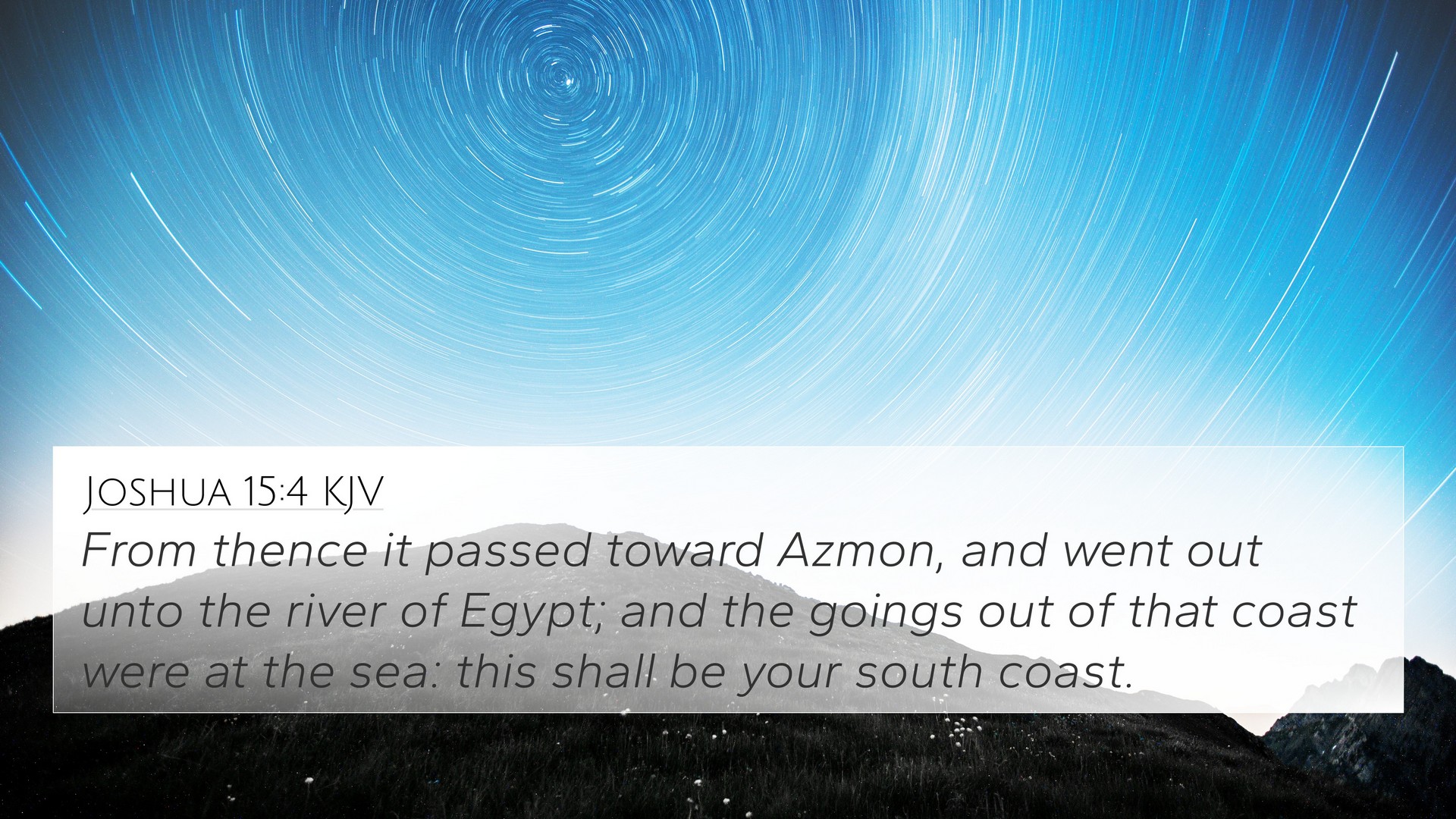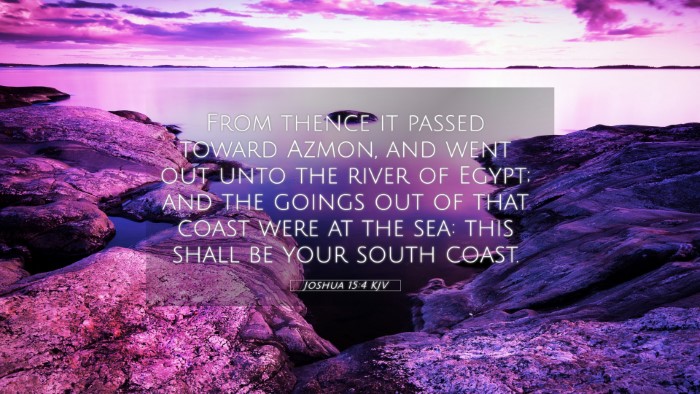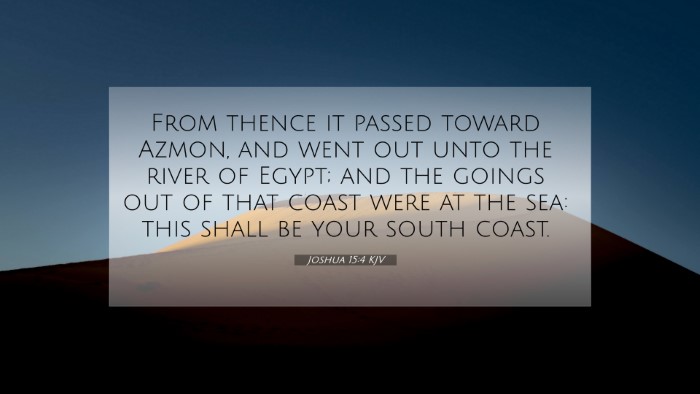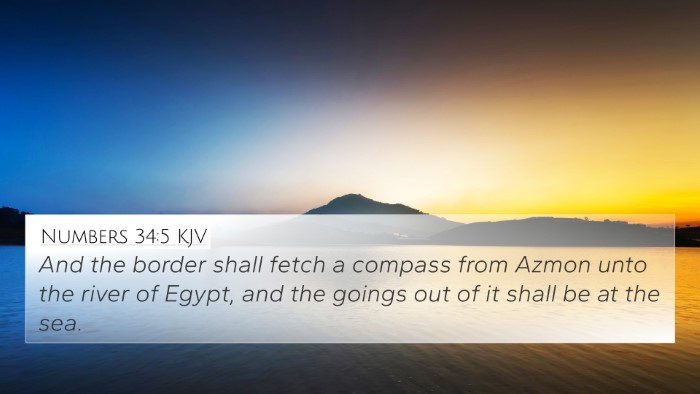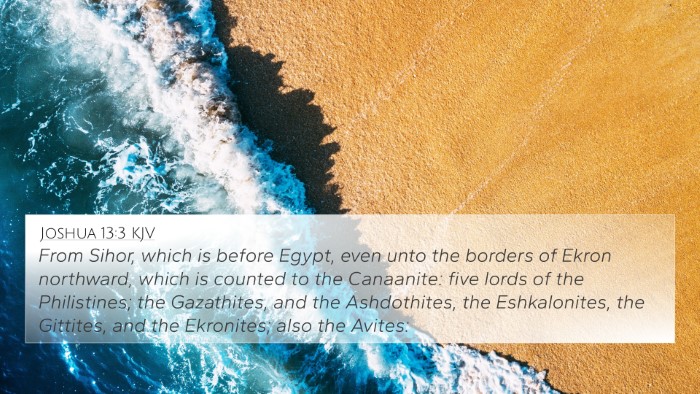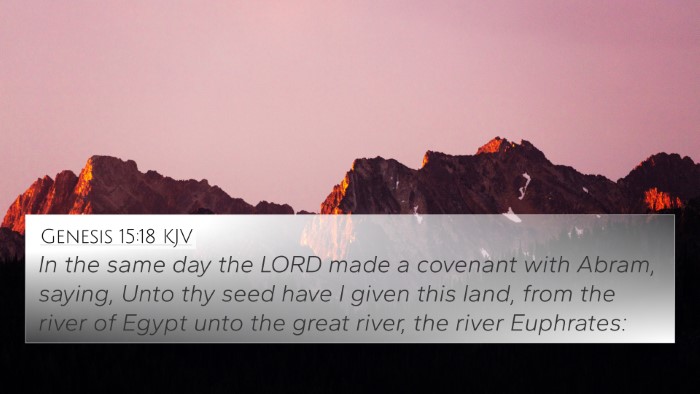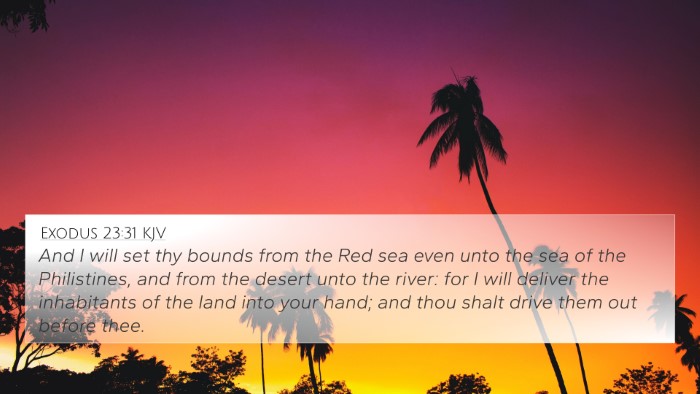Understanding Joshua 15:4
The verse Joshua 15:4 carries significant historical and theological implications within the context of the conquest and allocation of land in the Promised Land. It states:
“And the border went up to Debir from the valley of Achor, and it turned northward toward Gilgal, which is before the ascent of Adummim, and it went down to the stone of Bohan the son of Reuben.”
Meaning and Interpretation
This verse articulates part of the geographical demarcation of Judah's territory, illustrating the boundaries set during the Hebrew conquest of Canaan. Below are insights synthesized from public domain commentaries.
-
Matthew Henry's Commentary:
Henry emphasizes the significance of land distribution among the tribes. The verse shows God's fulfillment of promises made to Israel, where each tribe receives its inheritance. The fixed borders illustrate God’s providence and the care for His people in granting them a homeland.
-
Albert Barnes' Notes:
Barnes discusses the detailed nature of the land descriptions. He notes that these geographical markers are essential for understanding the territorial claims and the organization of the Israelite tribes. The mention of specific locations denotes God's meticulous planning and the importance of each tribe's heritage.
-
Adam Clarke's Commentary:
Clarke points out that the careful delineation of Judah's borders reflects the importance of heritage and identity in ancient Israel. He suggests that understanding these boundaries contributes to recognizing God’s direct involvement in the life and future of His people.
Thematic Connections and Cross-References
Joshua 15:4 has several connections to other scripture passages that enhance our understanding of its meaning. Here are 7-10 Bible cross-references related to this verse:
- Joshua 13:15-16 - Discusses the land given to the tribe of Judah, resembling the inheritance themes in 15:4.
- Joshua 14:1-2 - Highlights the division of the land among the tribes, further categorizing Judah's portion.
- Nahum 2:1 - Reflects on the significance of border areas and how they symbolize protection and delineation of territory.
- Genesis 49:10 - Discusses the tribal blessing of Judah, hinting at the tribe’s prominence among the Israelites.
- Exodus 23:30 - Contains principles of land inheritance and the gradual occupation, similar to Judah's claim in Joshua 15:4.
- Numbers 34:3-12 - Provides guidelines for setting the boundaries of the various tribes, emphasizing legal and religious significance.
- 1 Chronicles 4:4 - Chroncles the descendants and territories of Judah, linking their history back to Joshua’s contemporary description.
Scriptural Cross-Referencing
The process of cross-referencing these Biblical texts allows a more profound understanding of Joshua 15:4. Here are some helpful insights on how to engage in cross-referencing Bible study:
- Utilize a Bible concordance to locate terms and themes that connect with Joshua 15:4.
- Use a cross-reference Bible study guide to explore themes of land inheritance and tribal identity.
- Identify commonalities and patterns in texts across both the Old and New Testaments to deepen your understanding of covenant themes.
- Employ the method of Bible chain references to correlate verses on inheritance, land, and God's promises to His people.
- Study comprehensive Bible cross-reference materials that focus on historical contexts, such as Israel's journey to establish their homeland.
Conclusion
In interpreting Joshua 15:4, we recognize the verse's reflection of God’s promises fulfilled through a detailed geographic and historical lens. The careful delineation of inheritance not only serves the purpose of legal property distribution but also emphasizes a deeper theological significance regarding identity, belonging, and the covenant between God and His people. Engaging with cross-referenced scriptures provides a broader, enriched understanding of these themes throughout the Bible.
By linking scriptures, we participate in an inter-Biblical dialogue that allows us to glean insights on themes of inheritance, spiritual identity, and God’s providence.
